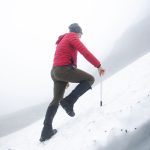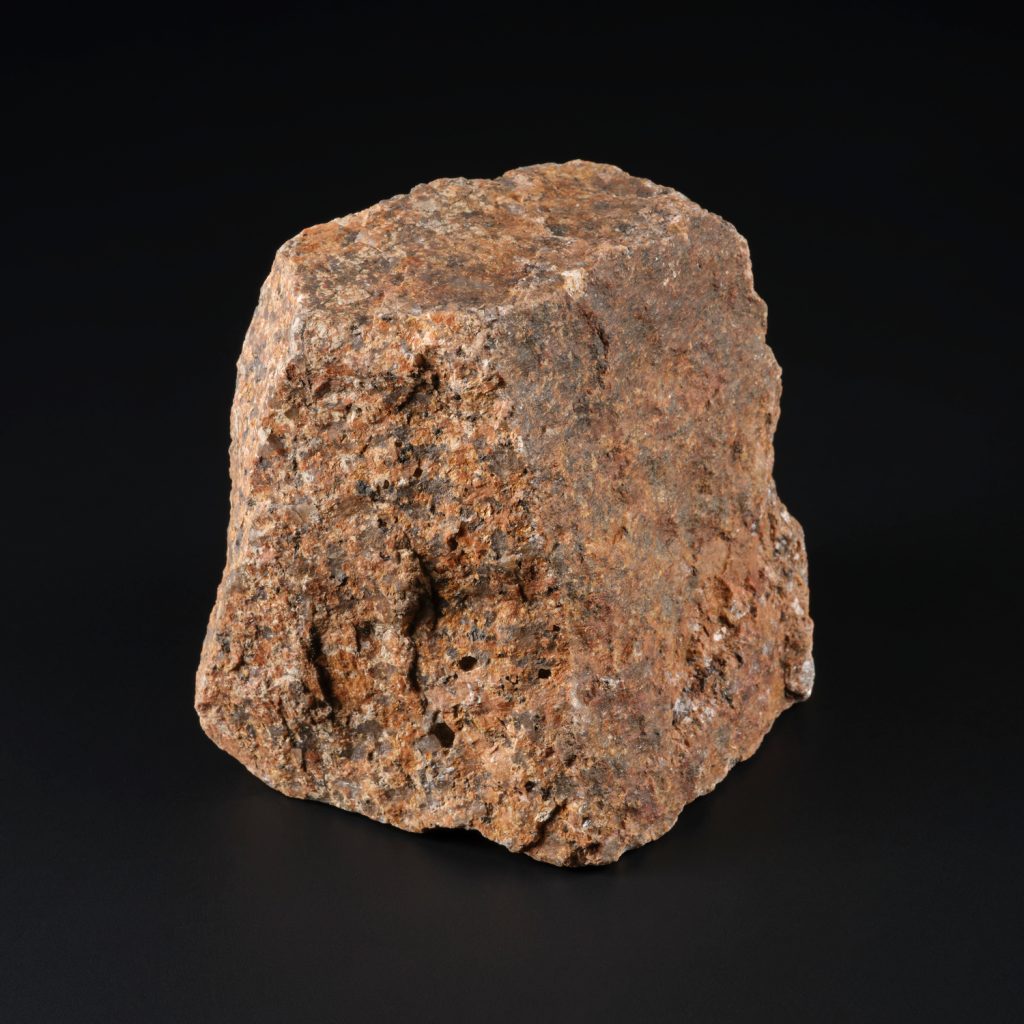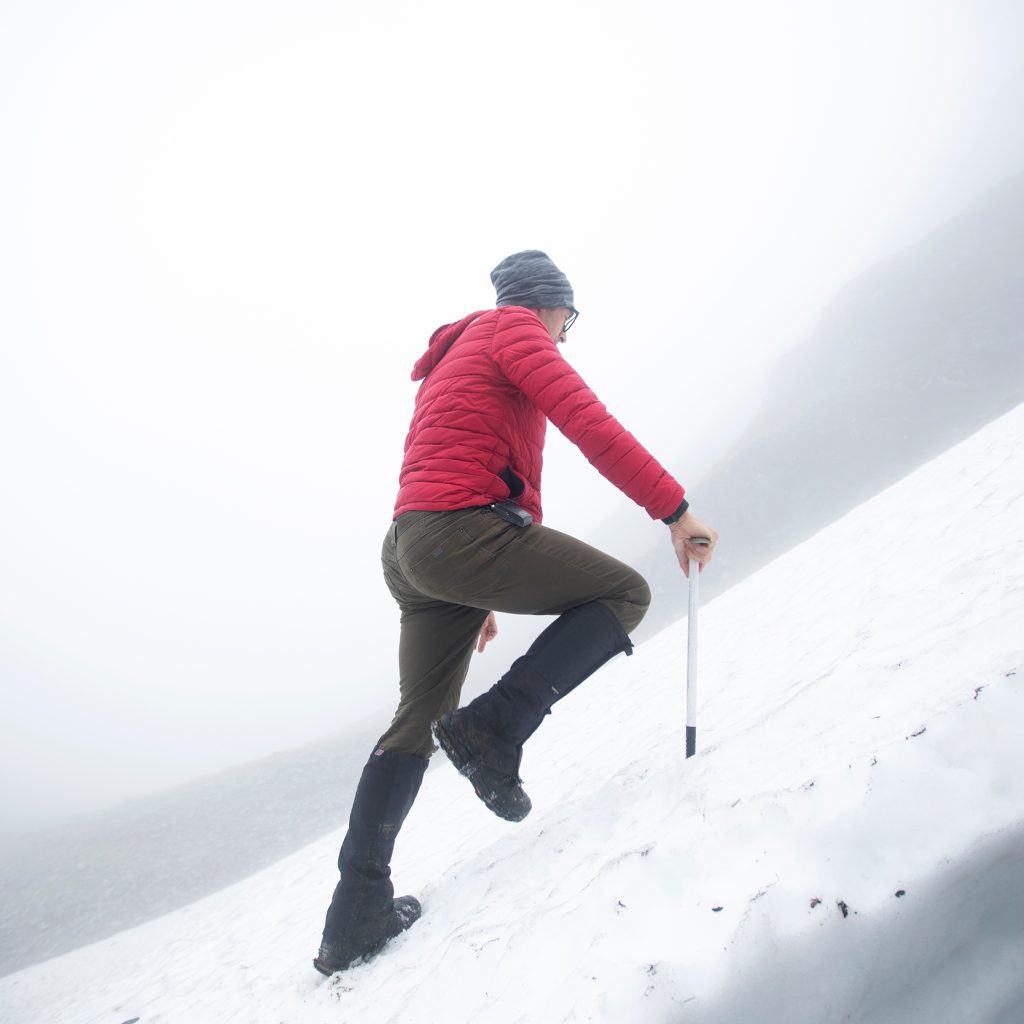What can patches of snow across Scotland tell us about the global environmental challenge? We recently acquired objects from Scotland’s ‘Snow hunter’ Iain Cameron relating to his vital work recording these patches. In this blog, Curator Sarah Laurenson introduces us to those objects before Iain offers an evocative insight into his world.
Introduction by Sarah Laurenson, Acting Principal Curator, Modern and Contemporary History
Patches of snow can last all year round in Scotland’s mountains. They survive through the summer and autumn and, in the past, have endured for centuries at a time. These snow patches are the closest thing the United Kingdom has to glaciers, and they act as important indicators of environmental change.
We recently collected a group of objects from Iain Cameron, popularly known as Scotland’s ‘snow hunter’. Iain diligently measures and records the size of many snow patches each year. His work adds to 300-years’ worth of evidence that shows that in the 21st century Scotland has seen less snow, and that snow is melting more quickly than at any point in the historical record.
Iain’s objects are important additions to the contemporary collections at National Museums Scotland, representing the impact of and responses to the changing environment. A lump of granite from under the ‘Sphinx’, Scotland’s longest-lying and best-known snow patch, sits at the centre of the group. Trapped under snow for years at a time, it has seen daylight for perhaps only a few weeks over the course of three centuries. Iain’s well-worn walking boots are testament to the many miles he travels across rough ground to seek out summer snow. The laser distance finder he uses to measure snow patches tells us of the rigorous work that goes into collecting the data.
Finally, in a new addition to the group, we have a bottle of melt water from the Sphinx. Iain collected this as it melted in 2021, an event that was marked by the world’s media. This speaks of the growing interest in, and concern around, these fascinating but vulnerable lumps of snow.
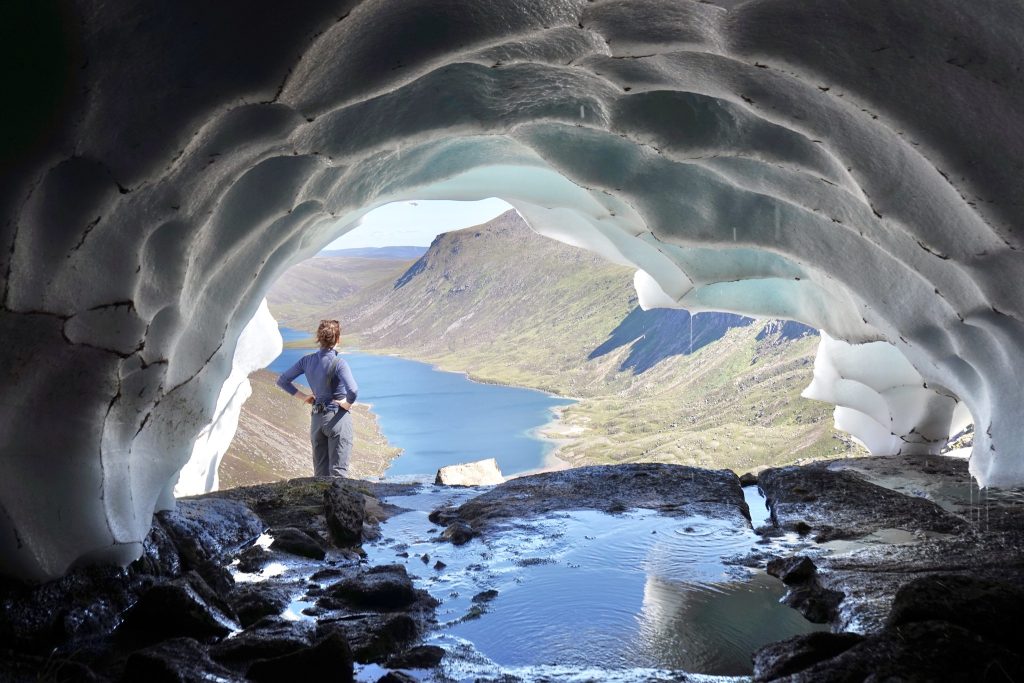
I’ve been privileged to accompany Iain into the mountains as part of the research that supports our contemporary collecting programme. It is impossible not to be fascinated by these areas of snow, tucked away in rocky nooks in some of Scotland’s highest places, and by the scale and significance of Iain’s work. Below, he tells us in his own words about searching for snow in the most hard-to-reach parts of the country, and about having his objects enter the National Collections.
The vanishing ice by Iain Cameron
Seeking out patches of the previous winter’s snow on Scotland’s hills is not everyone’s idea of what constitutes an ‘enjoyable’ summer walk in the high places of our country. However, since the 1990s this kind of trip is exactly the sort of thing that I and a few other hard-core enthusiasts undertake, unfailingly, every year.
Though we may share the same car-parking spaces with our Munro-bagging friends, our paths will diverge all-too-quickly once the boots have been pulled on. For those intent on summiting a hill or two, following the footfall of the thousands of other walkers who have been here before is a relatively uncomplicated endeavour. For the chionophile, though, our objective(s) lie in shaded hollows, or at the foot of cliffs, in some of the most remote and out-of-the-way places the Highlands have to offer. Whilst sandwiches are consumed on the summit cairn in bright sunshine by the Munro-bagger, ours are wolfed down when lying in the shade of a 500-foot cliff, careful not to put our water bottles in a place where a slippage would mean them rolling half a mile away.
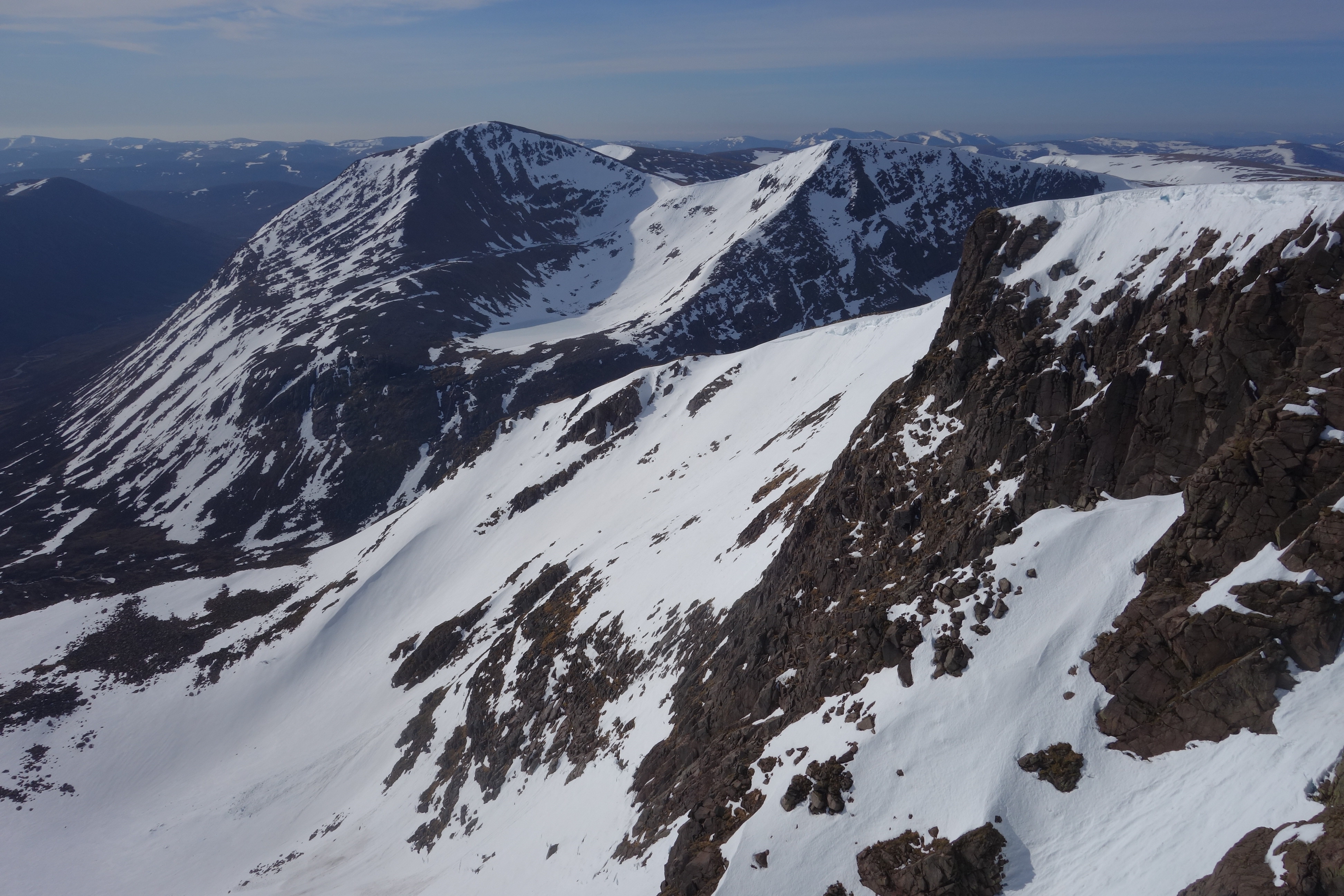
Snow-patch spotting has become far more socially acceptable these days than when I started doing it properly many years ago. Back then, in a simpler era when climate change was known, if at all, as global warming, walks in the hills were nowhere near as popular as they are today. If I’d told someone on the Cairngorms in September 1996 that I was heading for the most isolated place in that range to look at a bit of snow that was two metres wide, chances are that I’d be looked at with a mixture of incredulity and pity. But not so nowadays.
In the run-up to the COP 26 conference in Glasgow in November 2021, with Scotland’s last few patches of snow from the previous winter about to expire completely for only the seventh time in recorded history (and three of them in the last 20 years), my phone was red-hot with media requests. The disappearing Scottish snows had captured the public imagination in a way that a generation ago I’d have scarcely thought possible.
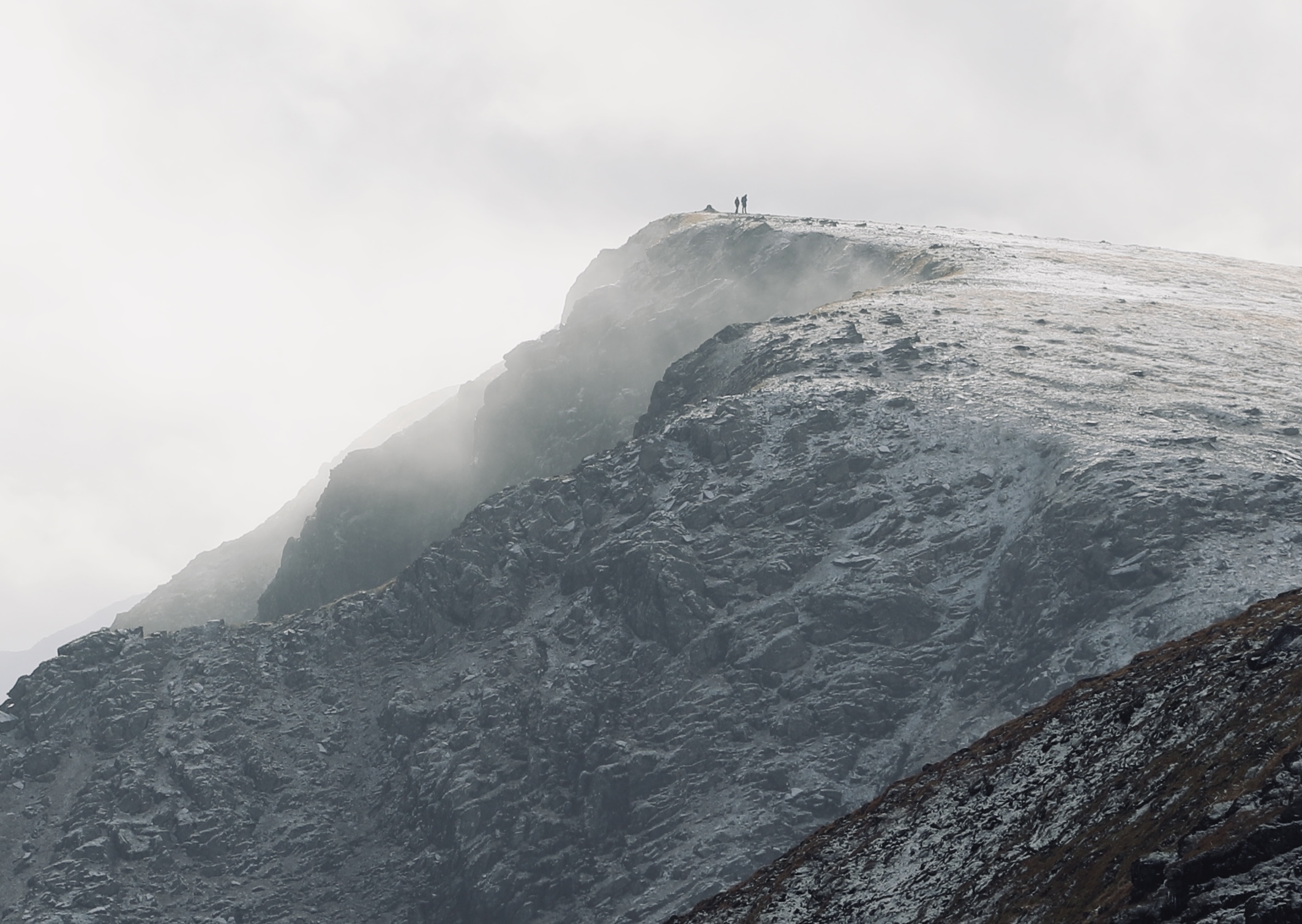
Easily the most important patch of snow in Scotland, at least in historical terms, is ‘The Sphinx’. So-called because of the formation of rocks above it, The Sphinx has been observed closely since the 1840s. Prior to that, anecdotal evidence exists from Cairngorms’ gamekeepers and stalkers that suggests observations go back to the late mediaeval times.
This doughty, enigmatic patch of snow sits in the very deepest bowels of the Cairngorms, in Braeriach’s Garbh Choire Mòr. This glacial gouge in the heart of the mountain translates into the English tongue as ‘big, rough corrie’, and never has such a description been more apt. This magnificent place of shattered granite and alpine beauty has a quiet magic found in only a few places I have ever been to in Scotland. Though it is an exceptionally hard place to get to, even for hardened walkers, its rewards are always worth it.

The Sphinx’s importance comes from its longevity. Through the anecdotes of the old gamekeepers and stalkers, the observations of the Scottish Mountaineering Club, the notes of the great naturalist Seton Gordon, and finally to the record-keeping of ecologist par excellence Adam Watson, we know that the Sphinx had, before 2021, disappeared only seven times in recorded history: 1933, 1959, 1996, 2003, 2006, 2017 and 2018. It takes no particular skill to recognise that five of these seven disappearances happened in our own generation.
So it was, then, that when I tweeted out that The Sphinx was set for another disappearance in October 2021 it attracted a level of interest way out of proportion to its modest size. Because of COP 26, and the local angle to the story, it was the perfect metaphor for the world’s wider climate change worries. Everyone wanted to know about The Sphinx and its story. From relative obscurity it has become one of the world’s best known patches of snow.

But The Sphinx is not the only important or newsworthy patch of snow in Scotland. In the west, near Ben Nevis, Aonach Beag, one of the 4,000 foot+ hills in the country, has in one of its remote corries a relic of winter that can cling on for many years unmelted. Recently, in 2018 and 2021, it outlasted The Sphinx by surviving through the entire year: an unheard of occurrence in recorded history.
We are still trying to understand why we are witnessing this changing of the snow guard, for we do all this work as amateurs, with no institution or research facility willing or able to fund such work. In the very real sense of the term, we are citizen scientists. But I think it is fair to say that we prefer it this way, to be free of the potential political pressure to spin our findings. To their enormous credit, the Royal Meteorological Society have published the results of these findings each year in the hallowed pages of their Weather journal. They have commented to me, as lead author, that they deeply value the work.
When I was approached by National Museums Scotland if I would like to have some items displayed I was slightly surprised. Though I know that this field of study has become quite popular I still consider it very niche, especially the actual act of going to the hills and finding the old snow. But it is a real honour to know that a pair of my old boots and laser tape measure will be placed in a glass case beside a small piece of granite that I liberated from under the Sphinx patch in 2018 when it melted completely.
To be part of Scotland’s historical story is deeply humbling, and I can only hope it inspires a new generation of snow-spotters that I can pass the baton on to.
To find out more about Iain’s work and Scotland’s summer snow, see: Iain Cameron, The Vanishing Ice (Vertebrate Publishing, 2021).

